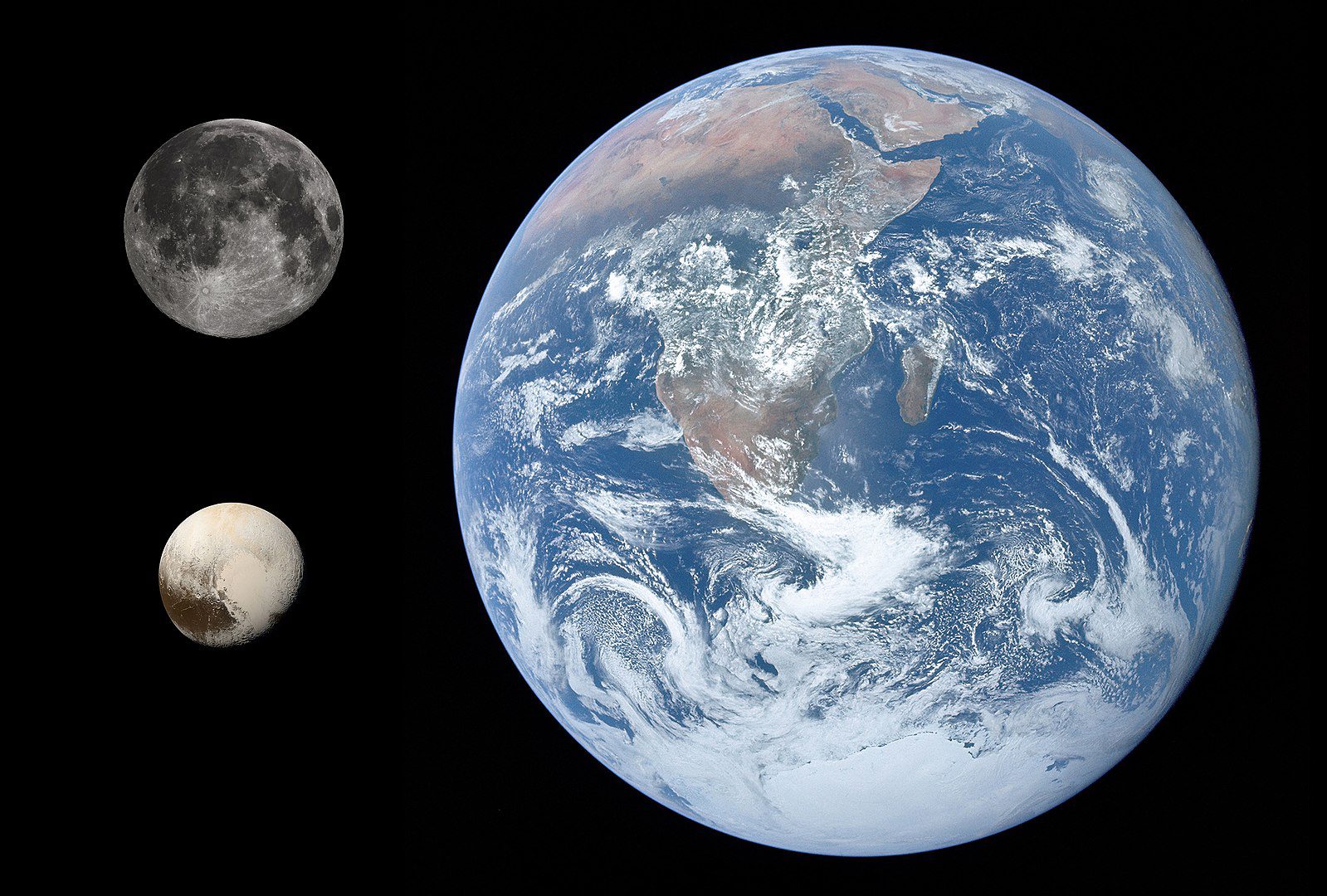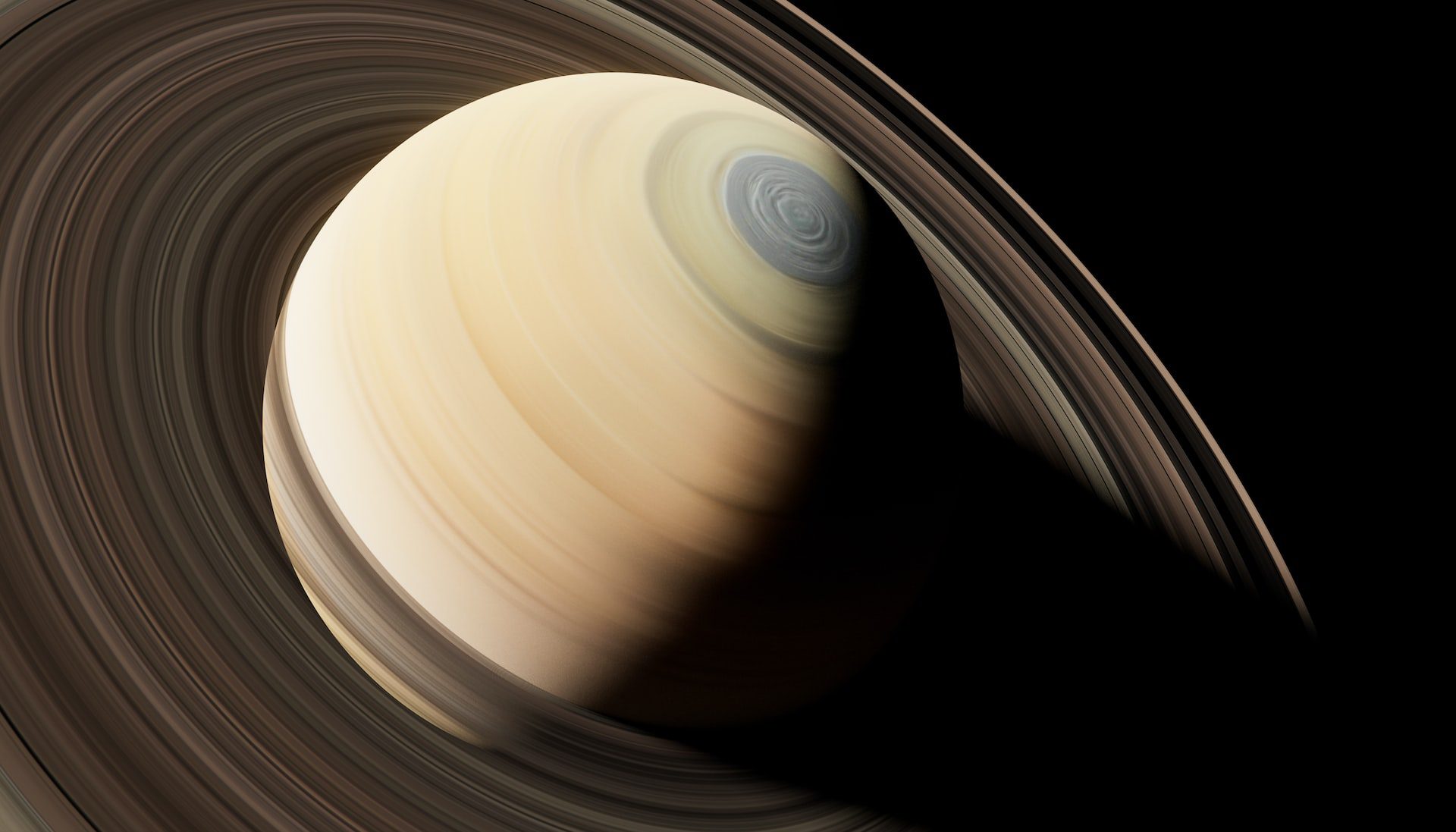
The solar system; Sun, planets’, dwarf planets’ and moons’ size to scale, labelled. Distance of objects is not to scale by CactiStaccingCrane – Wikipedia
Top 15 Facts About the Solar System
Humans are curious by nature which led to questions such as are we alone and what else is out there in the universe? To answer these questions, we’ve taken a proactive role and explored the depths of our solar system and our universe.
One of our biggest steps towards truly answering these questions was the moon landing. On July 20th, 1969, humans left the comfort of our little green planet and went to the moon. This was the first-time humans interacted personally with the solar system. As Neil Armstrong put it, it truly was “One small step for man, one giant leap for mankind.”
However, this was only the beginning. For years, we have sent probes and rovers to the farthest corners of our solar system in a quest to learn more about our cosmic neighbors. And as we search for answers about the possibility of extraterrestrial life, we continue to uncover astonishing facts about our little corner of the universe.
In our journey, we’ve discovered planets and disputed some (Pluto), moons, dwarf planets, asteroids, comets, and other small objects. So, fasten your seatbelt, and let’s look at some surprising, fun, and awe-inspiring facts about our solar system.
1. Mars Has the Largest Volcano in The Solar System

A composite Viking orbiter image of Olympus Mons on Mars, the tallest known volcano and mountain in the Solar System. Image by NASA – Wikimedia Commons
With Elon Musk championing the idea of making humans a “multi-planetary civilization” Mars seems to be the preferred destination. While Mars seems and appears calm and quiet now, it was previously plagued by gigantic volcanoes.
The biggest volcano recorded in the solar system is known as Olympus Mons. The volcano is about the size of Arizona at 374 miles (602 km) across. It is three times as tall as Mount Everest at 16 miles (25 kilometers) in height.
Olympus Mons is 100 times bigger than Hawaii’s Mauna Loa (Earth’s largest volcano), according to NASA. The size of volcanoes on mars is large due to the low gravitational pull on the planet.
2. Jupiter Has a Giant Storm That Could Fit Up To 3 Earths

The Earth is shown at the same scale as the Great Red Spot of Jupiter. Prepared for NASA by Stephen Paul Meszaros – Wikimedia Commons
Jupiter is the largest planet in our solar system. Jupiter is a gas giant. What this means is that the planet has no surface but is composed of gas.
Jupiter has one of the most fascinating features in the entire solar system. This is the Great Red Spot which is a massive storm.
The storm is said to have started over 350 years ago and it is so large that it could fit 3 Earths inside it. It is also visible from earth through a telescope.
3. Saturn’s Moon Spews Out Water and Ice Particles

The icy Enceladus (Saturn’s moon) by National Aeronautics and Space Administration (NASA) – Wikipedia
Saturn is the sixth planet from the sun and the second largest. Saturn is easily the most recognizable planet in our solar system due to its distinctive ring system.
Saturn has dozens of moons all with different characteristics. One of these moons is Enceladus which is a small moon covered with ice.
It has geysers that shoot out plumes of water and ice particles from its south pole. These geysers suggest the possibility of a subsurface ocean on Enceladus, which could contain the necessary conditions for life. This has made the moon interesting to scientists in their search for extraterrestrial life.
4. Pluto Was Reclassified as A Dwarf Planet in 2006

Pluto compared in size to the Earth and the Moon by Gregory H. – Wikipedia
Pluto was recognized as the 9th planet until 2006. This was when the International Astronomical Union (IAU) decided to demote it from planet status and reclassify it as a dwarf planet.
Some astronomers were outraged (they still are) but the IAU provided sufficient reasons for this. Pluto’s reclassification was because it does not clear its orbital path like the other planets do.
5. There Is a Hypothetical Planet Yet to Be Observed

Artist’s impression of Planet Nine as an ice giant eclipsing the central Milky Way by nagualdesign; Tom Ruen,- Wikimedia Commons
Let me introduce you to Planet Nine. No, it’s not the latest invention from your favorite sci-fi author or director. Planet Nine is a hypothetical planet (yes you read that right!) that astronomers believe may be lurking on the edge of our solar system beyond Neptune’s orbit.
Despite not being observed to this day, observers believe that it does exist which as you can imagine has caused a massive stir in the community. Whether it’s a real planet or just a mirage, one thing is certain: Planet Nine has become the ultimate cosmic tease, leaving astronomers and space enthusiasts alike eager for a glimpse of its secrets.
6. The Sun’s Magnetic Field Flips Every 11 Years

This illustration lays a depiction of the sun’s magnetic fields by NASA – Wikimedia Commons
That’s right, every 11 years or so, the sun’s magnetic field flips, completely reversing its polarity. It’s like a cosmic game of musical chairs, where the north and south magnetic poles switch places.
This magnetic dance is caused by the sun’s internal dynamo, a process that generates the magnetic field by the movement of electrically charged particles within the sun’s plasma.
7. The Asteroid Belt Between Mars and Jupiter Has More Mass Than All Planets Combined
Located between Mars and Jupiter is a massive asteroid belt that can be described in leighman’s terms as a cosmic junk drawer. The belt is a collection of small, rocky objects, ranging from tiny pebbles to dwarf planets.
This belt contains so many objects that its total mass is so much more than that of all the planets in the solar system combined. However, this mass is spread out over a vast region significantly reducing its density which enables it to remain in place and not wreak havoc in the solar system.
8. Neptune Is the Windiest Planet

Strong winds on earth by Max Titov on Unsplash
Some refer to Chicago as the ‘Windy City’ because of its notoriously windy weather. However, as far as wind is concerned Chicago has nothing on Neptune!
The ice giant experiences winds that reach up to 2,100 km per hour. These high speeds are a result of Neptune’s distance from the sun and its tilted magnetic field. It is therefore safe to assume that if or when Planet Nine’s existence is proven, it will probably be the windiest.
9. Spacecrafts Have Been Sent to Every Planet in The Solar System

The SpaceX Crew Dragon spacecraft by NASA – Wikimedia Commons
Humans have been exploring space and our solar system for almost 70 years. Despite only having made physical contact with our moon, we have managed to send spacecrafts to all planets in the solar system.
This includes; Mercury, Venus, Earth, Mars, Jupiter, Saturn, Uranus, Neptune, and two dwarf planets; Pluto and Ceres.
10. Mercury is Shrinking

A full-color image of Mercury from the first MESSENGER flyby by NASA – Wikimedia Commons
It turns out that Mercury, the smallest planet in the solar system, is actually getting even smaller. because the planet’s iron core is cooling and solidifying, causing the planet’s surface to contract and shrink.
In 2016, information from MESSENGER showed fault scarps, which resemble cliff-like landforms on Mercury. Scientists are confident that the fault scarps were not formed that long ago because of their small size.
This, therefore, means that the planet is still contracting 4.5 billion years after the solar system was established. The MESSENGER is the Mercury Surface, Space Environment, Geochemistry, and Ranging (MESSENGER) spacecraft used to map the planet.
11. Pluto Has Mysterious Mountains

Pluto’s Majestic Mountains and Frozen Plains by NASA – Wikimedia Commons
Don’t let Pluto’s size fool you into thinking that it’s just a normal rock at the edge of our solar system. Far from it! In 2015, Nasa sent the New Horizons spacecraft to explore the dwarf planet, and what they saw changed how Pluto is perceived.
The spacecraft discovered a string of icy mountains on the planet that are up to 11,000 feet (3,300 meters) high. The discovery of the mountains was interesting but it’s what their presence means that remains a mystery to this day.
The presence of mountains implies geological activity as recently as 100 million years ago. However, for the geological activity to occur, there needs to be a significant source of energy.
The thing is, Pluto is too far away from the sun for it to be the source and there are no large planets nearby whose gravity would have caused that much disruption. So, what was the energy source? This remains a mystery.
12. Rings Are Very Common in The Solar System

Saturn by Planet Volumes on Unsplash
The planet Saturn is probably the best-known and most beautiful planet in the Solar System. That is mostly thanks to its distinctive and stunning rings. Saturn also has several amazing moons such as the infamous Titan.
Saturn’s rings were identified in the 1600s after the invention of the telescope. They remained special to Saturn only until recently when it was observed that several other planets also have ring systems. These planets include Jupiter, Saturn, Uranus, and Neptune.
What is special, however, is that while Saturn’s halo has reflective water ice, the other rings are composed of dust and rocky particles. Additionally, rings aren’t just found on worlds. For instance, astronomers found bands around the asteroid Chariklo in 2014.
13. All Planets (In Our Solar System) Are Round

This montage of planetary images was taken by spacecraft managed by NASA – Wikimedia Commons
Well, it’s quite amusing that despite all evidence to the contrary, there are still some people who believe that the Earth is flat. Perhaps they need a reminder that all the planets in our solar system are round, not just Earth. It seems a bit hard to argue that Earth is flat when all its neighboring planets are clearly spherical.
Maybe these flat earthers should take a trip to space and see for themselves. Although knowing them, they might argue that the roundness of the planets is just an illusion created by NASA’s CGI department. Oh, the joys of dealing with conspiracy theorists!
14. There are 224 Moons in The Solar System

Earth and its moon by Kevin Gill – Wikimedia Commons
There are various kinds, sizes, and shapes of moons. Several of them have atmospheres, and some even have subsurface seas.
As of February 2023, there are 224 ‘traditional’ moons in our solar system. This includes one for earth (you might be familiar), 2 for Mars, 92 for Jupiter, 83 for Saturn, 27 for Uranus, 14 for Neptune, and 5 for Pluto.
Nasa does also state that there are another 462 moons that are categorized as non-traditional. These moons orbit smaller objects, such as asteroids, dwarf planets, or Kuiper Belt Objects (KBOs) beyond the orbit of Neptune.
15. There Are Over 100 Billion Planets In Our Galaxy

A depiction of the vastness of the universe by Greg Rakozy on Unsplash
Our solar system is located in the Milky Way galaxy. There are over 100 billion planets in our galaxy alone, and when you consider that there are over 100 billion galaxies in the observable universe, it’s very hard to wrap your head around.
It’s enough to make you wonder if there’s anyone out there, looking back at us from their own little corner of the cosmos. The sheer size and scale of the universe can be daunting, but it’s also what makes it such an exciting and tantalizing field of study.
With so many planets and solar systems out there, the odds of finding extraterrestrial life may be higher than we once thought. Who knows? Maybe one day we’ll find out that we’re not so alone after all.
Planning a trip to Paris ? Get ready !
These are Amazon’s best-selling travel products that you may need for coming to Paris.
Bookstore
- The best travel book : Rick Steves – Paris 2023 – Learn more here
- Fodor’s Paris 2024 – Learn more here
Travel Gear
- Venture Pal Lightweight Backpack – Learn more here
- Samsonite Winfield 2 28″ Luggage – Learn more here
- Swig Savvy’s Stainless Steel Insulated Water Bottle – Learn more here
Check Amazon’s best-seller list for the most popular travel accessories. We sometimes read this list just to find out what new travel products people are buying.








